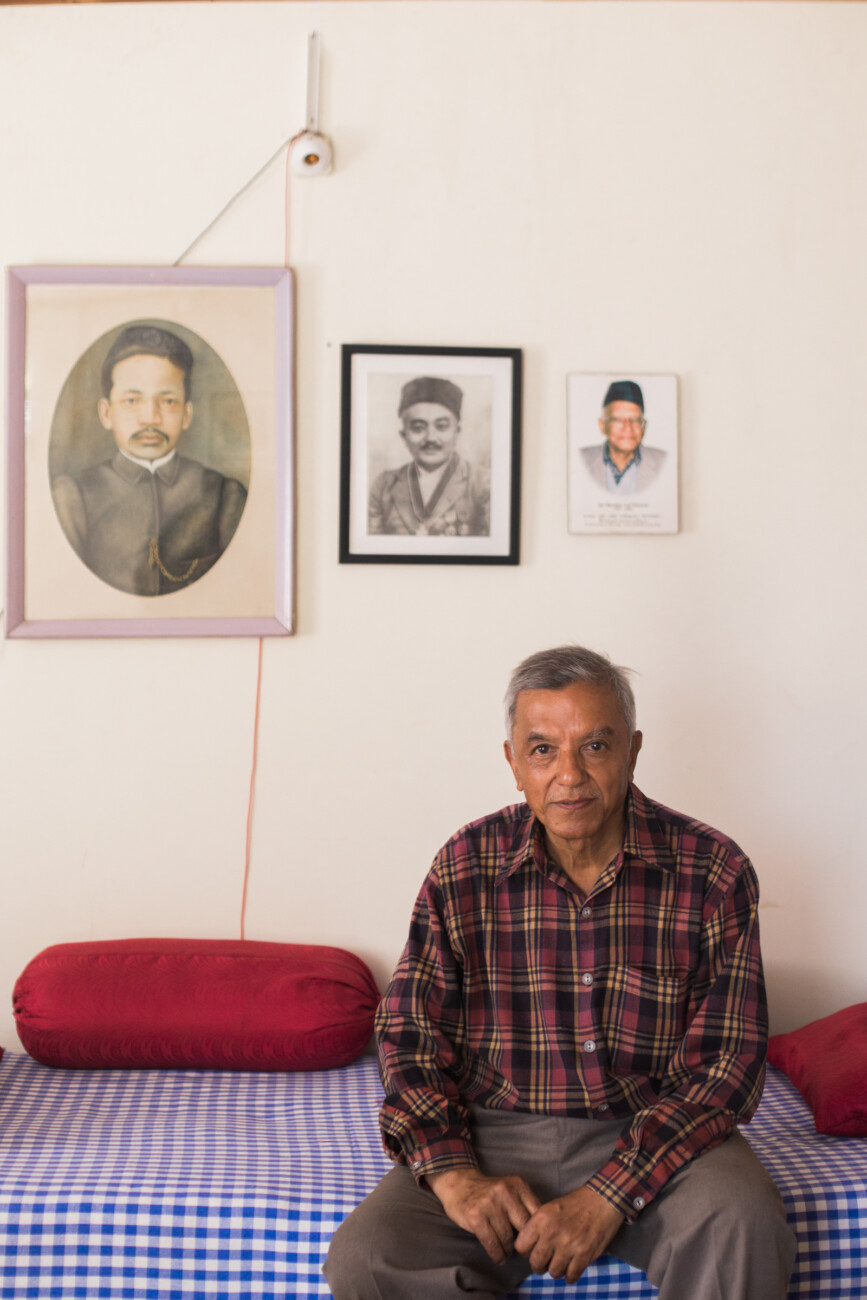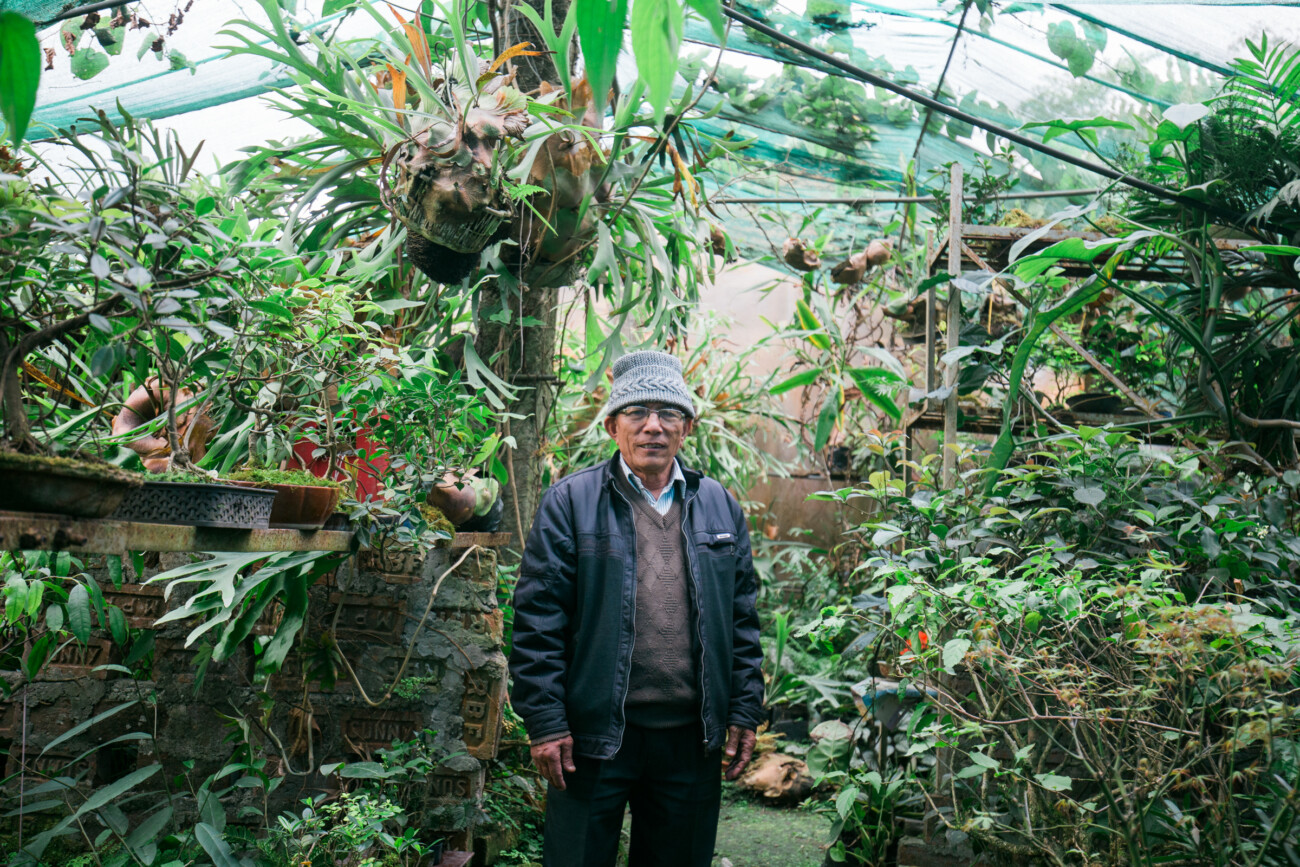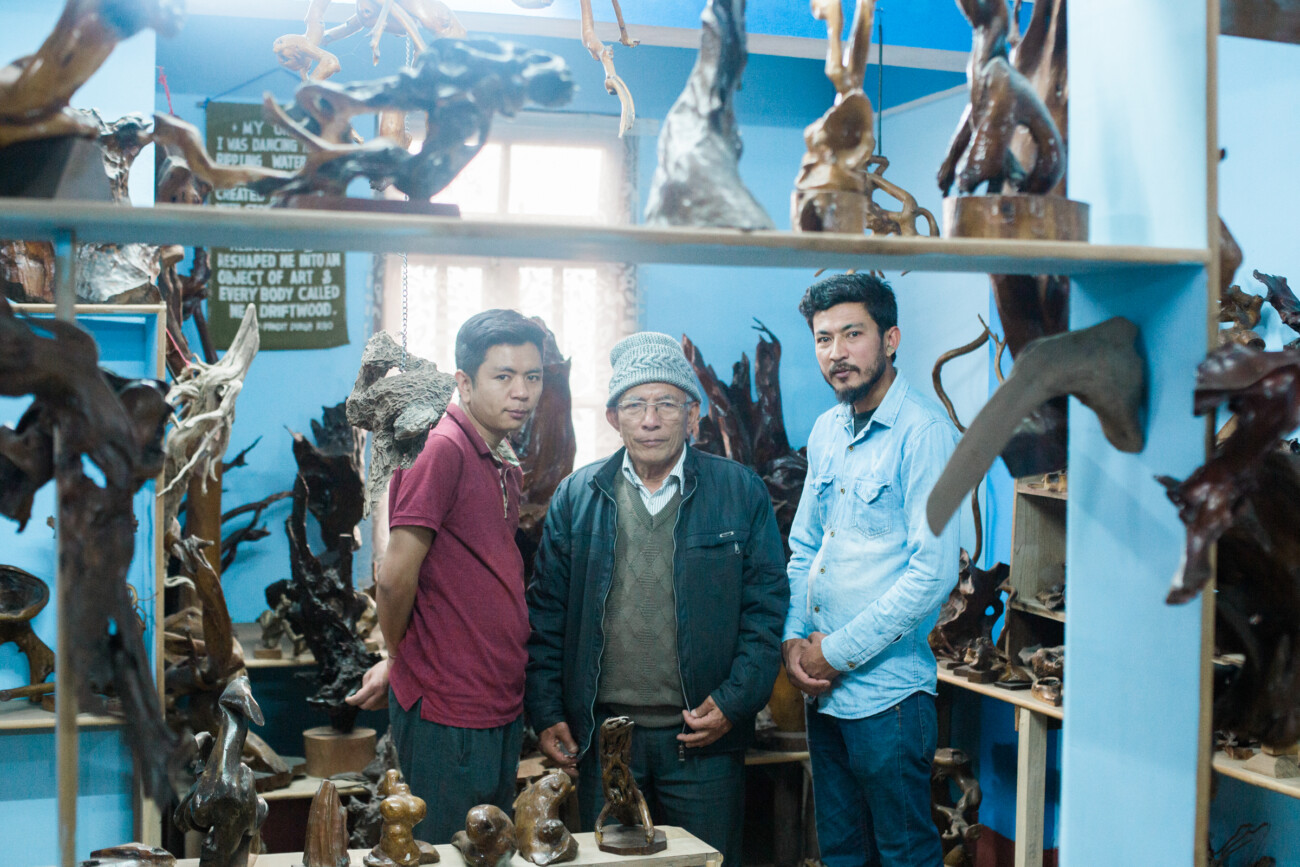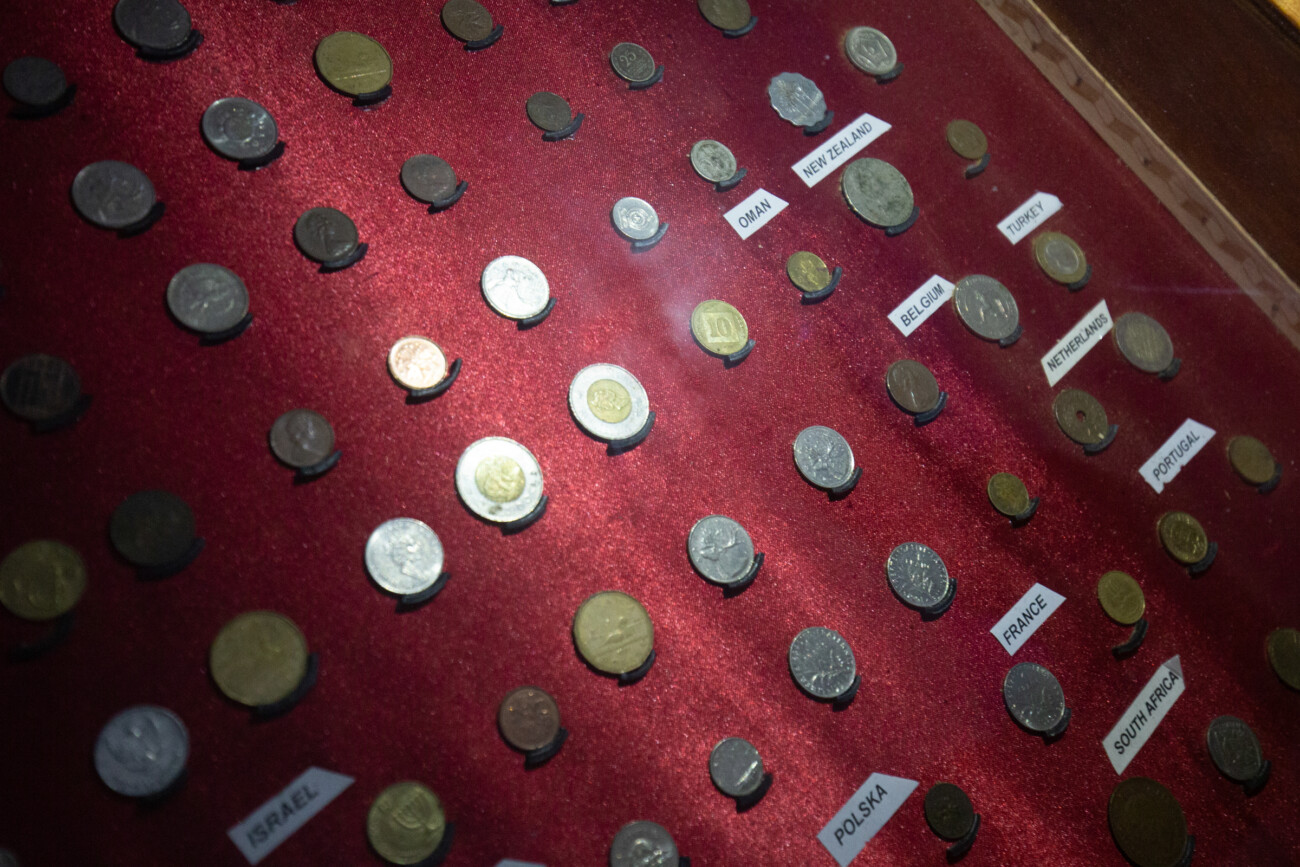The Newars began to migrate to Darjeeling and Sikkim from the Kathmandu valley two centuries ago, soon after the Gorkha conquest of Nepal in 1769 AD. They fled to escape the atrocities of the invaders.

Laksmidas Pradhan (Kasaju) from Bhaktapur migrated to these parts after the Kot massacre in 1846. Laksmidas and his brother, Chandrabir, arrived in Sumbuk in 1850 and settled in Sikkim in 1867 to work in the copper mine in Tuka Khani, South Sikkim, and later in several other mines. It is also believed that Laksmidas was invited by the Chogyal to collect revenues as he had proved himself an efficient businessman. Although there were some resentments towards the new comers, the brothers found powerful allies in Khansa Dewan and Phodung Lama who understood the potential of Laksmidas and his associates. A deed dated 1874, issued by Phodung Lama and Khansa Dewan leased, ‘Sadam land bounded on the North-east by Rooe Nadi to its confluence to the Teesta river, on the South-east all along the Teesta river, on the South and West all along the Burra Rungit up to its suspension bridge over the Rungit river, on the North-West from the Rungit suspension bridge along the old road up to Pukka village…’ (Shrestha, 2015). The deed further went on to say, ‘…that all the land within the boundaries…given to you to enjoy by your descendants…This was done in order to administer, develop and collect taxes.’ This lease gave them the much-needed encouragement to experiment with horticultural activities and develop a lucrative floricultural business. The introduction of cardamom and orange cultivation is attributed to these brothers.
The Newar people were highly accomplished in many fields—trade, administration, the arts and agriculture—and are tempered with entrepreneurial skills that did not go unnoticed. The grant of huge tracts of land enriched them. They were permitted to mine copper and mint coins for the Chogyal of Sikkim, and were given the title Taksari. The story of Rhenock, or the Black Hill, took a new turn in the late nineteenth century when the forefathers of the present-day Newar community in Sikkim were welcomed by both the powers that be—the British, and Sikkim’s ruling elite.
In 1910, Chandra Nursery was established in Rhenock by Rai Saheb Ratna Bahadur Pradhan a descendent of Taksari Chandrabir Pradhan. It soon became a name to reckon with in the international flower business. By 1932, ‘Nirvana’, a mansion, was built on the proceeds of a single order of their flower business. Indeed, Chandra Nursery, and the intrepid subsequent owners, began the trend of botanical exploration of the Sikkim Himalayas, rapidly ‘placing this tiny Himalayan Kingdom into the floricultural map.’ (Shrestha, 2015).

Rhenock, or the Black Hill, thus called because of the frequent fire that engulfed and charred the settlement was known for its malarial infestation, and people shunned this place. But over the years the Newars who settled here, as Rajiva Shrestha recalls nostalgically in his book, Sikkim, Our Newfound Home in the Black Hill, with their labour transformed their new home into a veritable garden.
When trade died, so did the fortunes of Rhenock. Today, Rhenock is slowly emerging from a collective amnesia. Several hotels and homestays have come up here and there is a steady in-flow of tourists.
Rhenock thrived due to its strategic location on the Silk Route—it was a camping ground where the mule trains halted. Nathula, Jelepla, Lampokhari, Yatung, Rongli and Rhenock are names that still echo with the bustling activities of caravans transporting wares across the borders. Rhenock’s destiny was tied to Kalimpong which was the trading hub in the heart of the Himalayas. When the Silk Road that passed through Aritar came to a halt, it dried up the trade in Kalimpong, in West Bengal, and Gangtok, the capital of Sikkim. The Indo-China war of 1962 summarily brought all trading activities to a halt. When trade died, so did the fortunes of Rhenock. Today, Rhenock is slowly emerging from a collective amnesia. Several hotels and homestays have come up here and there is a steady in-flow of tourists.

Among the places that attract a growing number of curious tourists is the Ram Gauri Sangralaya, a museum started by Ganesh Kumar Pradhan’s father, who began by collecting stamps and coins. The collection gradually grew to include books and magazines. By the time his father passed away in 1980, Ganesh Kumar Pradhan was fully involved in developing the museum. Over the years he has managed to collect precious documents, coins, stamps, drift wood and interesting stones that he is hard-pressed to preserve. As a legacy of the past, he nurtures his passion for bonsai cultivation.


Ganesh’s sons, as well as his wife, participate in running the museum. They have undergone training provided by the government in the preservation of documents, and are also involved in holding workshops on stamps for schools. They have travelled as far as Delhi and Kolkata in connection with their museum work.
However, the hope of economic revival is hit by the pandemic that has cast a pall of uncertainty once more.
References:
- Shrestha, B. (2015). The Newars of Sikkim Reinventing Language, Culture and Identity in the Diaspora, Vajra Books.
- Shrestha, Rajiva Shankar (2018). Sikkim, Our Newfound Home in the Black Hill: Newars Here and There, Karuna Devi Smarak Dharmarth Guthi.


What an interesting article-- cathecting so many subjects I'd love to know more about! I had no idea there was a museum of coinage, stamps, documents in Rhenock. Does it have a website? The photograph with all the roads converging there that accompanies the piece, however, is quite horrifying. Why so many? It is such a contrast with the picture of the peaceful lake. The grim opposite of 'forgotten'...Looks like a teeny bit of 'forgotteness' might be a good thing.
Hope Cooke? Is this an coincidence? Or the real queen replying? 😅